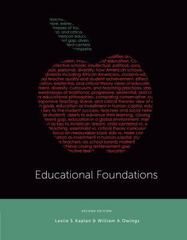Question
Question: 1.Which is not true when preparing the Statement of Cash Flows section of the forecasted model? A.Increases in operating assets and decreases in operating
Question:1.Which is not true when preparing the Statement of Cash Flows section of the forecasted model?
A.Increases in operating assets and decreases in operating liabilities will be treated as cash outflows to determine cash flows from operating activities.
B.Depreciation, amortization and share-based compensation expense will be added back to net income to determine cash flows from operating activities.
C.Increases in operating assets and increases in operating liabilities will be treated as cash outflows to determine cash flows from operating activities.
D.Non-operating gains from sales of equipment or investments will be subtracted from net income to determine cash flows from operating activities.
2.An analyst has compiled the following 2016 information about Suggs, Inc. (in millions).
- Income Statement Data:
- Net sales = $650, COGS = $350, SG&A expense = $55, Interest expense = $14, Income taxes = $76 and Net income = $155
- Balance Sheet Data:
- Beginning and ending total interest bearing debt = $260 and $270, respectively.
Based on the above data, Suggs' interest coverage ratio is closest to:
A.17.5x
B.16.5x
C.18.9x
D.12.1x
3.Which of the following is not true?
A.The Balance Sheet is best used to develop an understanding of the risk structure of the firm.
B.The Statement of Cash Flows is best used to develop an understanding of the earnings quality of the firm.
C.The Income Statement is best used to develop an understanding of the operating performance of the firm.
D.The Statement of Comprehensive Income is best used to develop an understanding of the total cash flows for the firm.
4.If a company has projected revenues of $10 billion, a gross profit margin of 65%, and projected SG&A expenses of $2 billion, what is the company's operating (EBIT) margin?
A.45%
B.20%
C.55%
D.80%
5.The Change in Working Capital on the Cash Flow Statement should include Current Assets and Current Liabilities, excluding cash and debt, according to the definition of Working Capital. Why would you include changes in BOTH Current AND Long-Term Deferred Revenue in this section? After all, Long-Term Deferred Revenue is not a Current Asset.
A.You might in order to simplify the statements and save time, but it should really be counted elsewhere.
B.This is not correct - Long-Term Deferred Revenue should be counted in Cash Flow from Financing instead, because it's a long-term liability.
C. this is because Long-Term Deferred Revenue is related to a company's core business operations, just like everything else in Cash Flow from Operations, so it belongs there.
D.If you wanted to , you should consolidate both the Deferred Revenue line items into a single item on the balance sheet instead.
6.Let's say that we're creating projections for a company, and in its historical filings Depreciation & Amortization and Stock-Based Compensation are NOT listed as separate items on its income statement. Which income statement line items might INCLUDE these figures, and how should we project these items in future years?
A.They almost always show up exclusively in COGS; you should break them out as separate line items and project them separately going forward.
B.If they're not listed on the income statement, the company does not have significant expenses in either category so we don't need to .
C.They may show up in either operating expenses or COGS, or in both; it's better to break them out as separate line items by modifying the historical statements and then project them separately going forward.
D.They always show up exclusively in operating expenses; you only need them for the cash flow statement so you don't need to break them out separately in income statement projections.
Step by Step Solution
There are 3 Steps involved in it
Step: 1

Get Instant Access to Expert-Tailored Solutions
See step-by-step solutions with expert insights and AI powered tools for academic success
Step: 2

Step: 3

Ace Your Homework with AI
Get the answers you need in no time with our AI-driven, step-by-step assistance
Get Started


